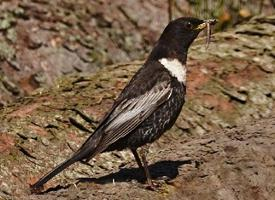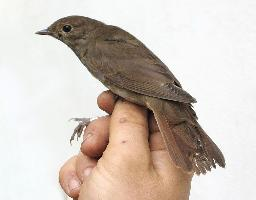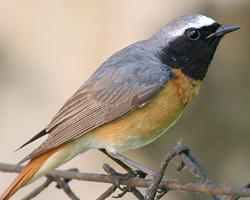
Statut de conservation
| Menacé |
Description de l'animal
The Ring Ouzel (Turdus torquatus) is a fascinating and somewhat elusive bird that belongs to the thrush family, closely related to the more commonly known blackbird. This species is notable for its striking appearance and unique habitat preferences, often found in the upland areas of Europe, including the British Isles, Scandinavia, and extending into parts of North Africa and Asia during its migration periods.Characterized by its robust and somewhat rounded body, the Ring Ouzel typically measures between 23 to 24 centimeters in length, with a wingspan that can reach up to 38 centimeters. Males of the species are particularly striking, boasting a deep black plumage that is beautifully contrasted by a distinctive white bib or gorget on the chest, from which the bird derives its name. The edges of their wings and tail feathers may exhibit a subtle, yet noticeable, pale gray fringing. Females and juveniles are somewhat less striking, with their plumage being a duller brown and the white chest marking less pronounced, often appearing more buff or creamy in color.
The Ring Ouzel's habitat is predominantly in mountainous and moorland regions, where it prefers open landscapes with a mix of short vegetation and rocky outcrops. These birds are highly territorial during the breeding season, which typically runs from April to July. They nest on the ground, constructing their nests in sheltered locations such as amongst rocks or in dense vegetation, using grass, moss, and twigs, and lining them with finer materials for comfort.
Their diet is varied and changes with the seasons. During the spring and summer, their diet primarily consists of insects, worms, and other invertebrates, which they forage from the ground or low vegetation. As the year progresses into autumn, their diet shifts more towards berries and fruits, with rowan and juniper berries being particular favorites. This seasonal variation in diet is crucial for building up fat reserves for migration and the winter months.
Ring Ouzels are migratory birds. During the autumn, they move southwards to spend the winter in the warmer climates of the Mediterranean and northern Africa. Their migration is a testament to their resilience and adaptability, enduring long journeys across varied landscapes.
Despite their beauty and intriguing behaviors, Ring Ouzels are facing challenges. They are considered a species of conservation concern in some parts of their range due to habitat loss, changes in agricultural practices, and possible climate change impacts. Efforts are being made in several regions to better understand their ecology and to implement conservation strategies to protect their habitats and ensure their survival.
In conclusion, the Ring Ouzel is a captivating bird with a distinctive appearance and interesting ecological habits. Its presence enriches the biodiversity of the upland areas it prefers, making it a species of great interest to birdwatchers and conservationists alike. However, the ongoing challenges it faces highlight the need for continued conservation efforts to ensure that future generations can also marvel at this beautiful bird.
Animaux similaires
Nouvelles photos d'animaux
Top 10 des animaux
- Dolphin gull (Leucophaeus scoresbii)
- Diana monkey (Cercopithecus diana)
- Moustached guenon (Cercopithecus cephus)
- Galápagos tortoise (Geochelone nigra complex)
- Japanese macaque (Macaca fuscata)
- Stone loach (Barbatula barbatula)
- Russian tortoise (Testudo horsfieldii)
- Greek tortoise (Testudo graeca)
- Common flying dragon (Draco volans)
- Vendace (Coregonus albula)


